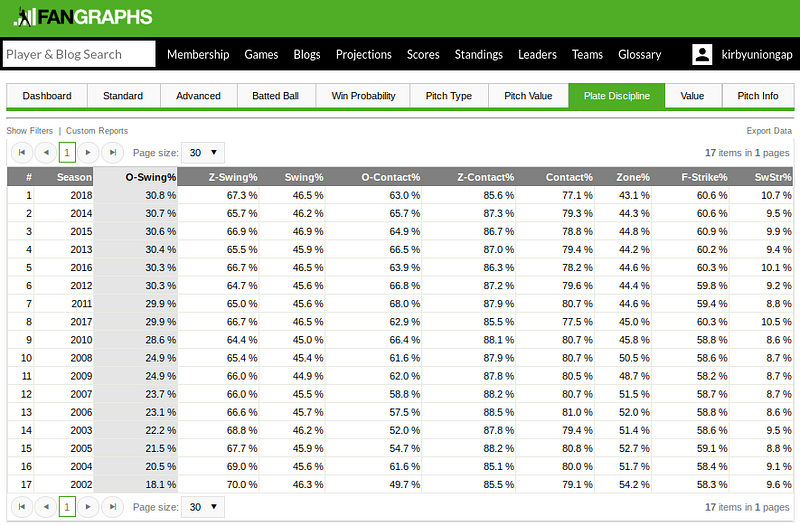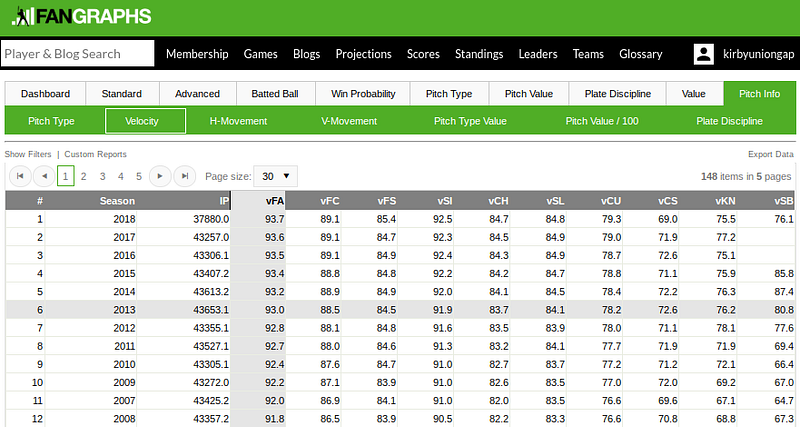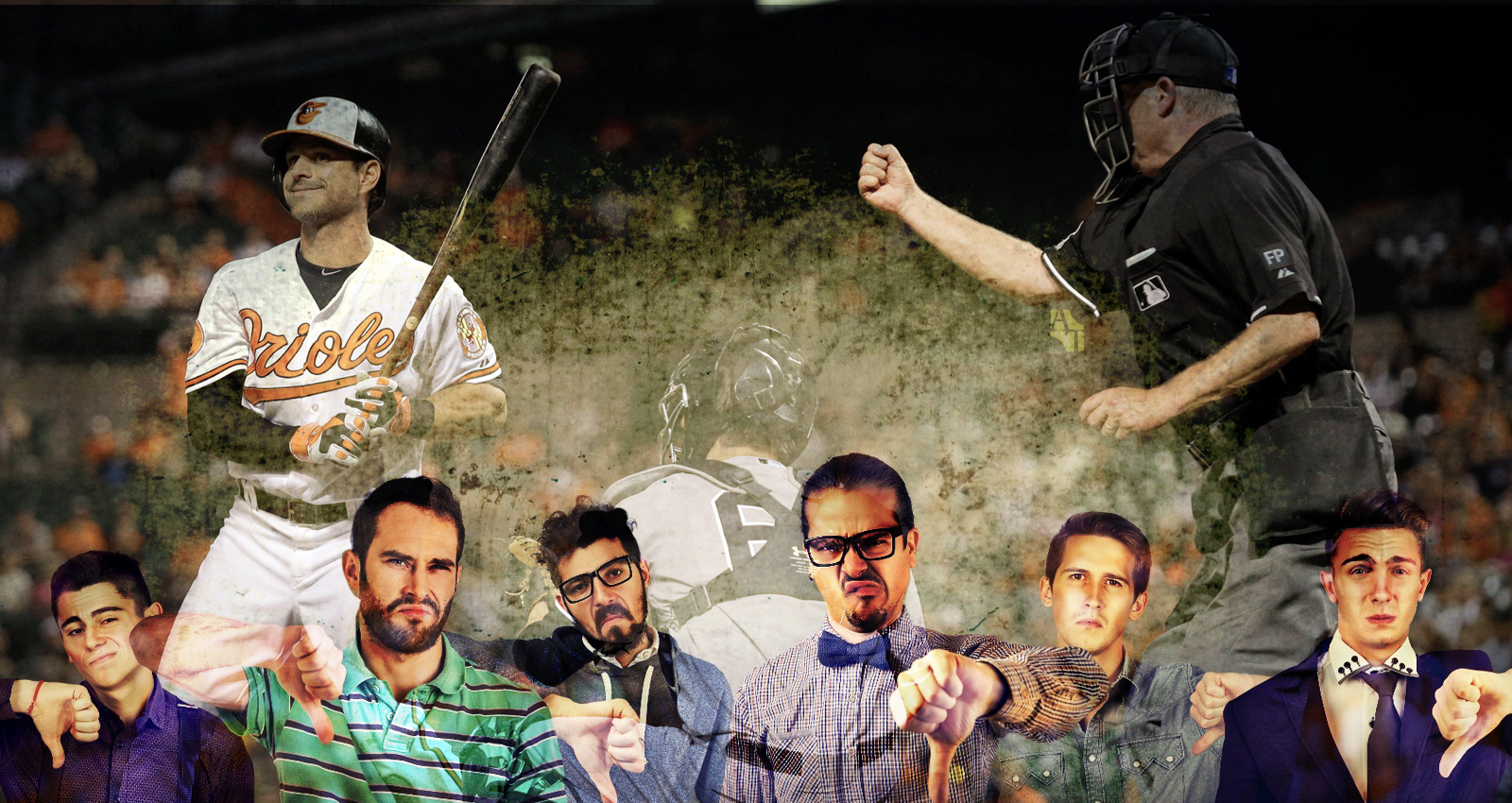The one sport that stands to benefit most from advances in technology is America’s Pastime. My colleague Ben Beecken shares that sentiment and understands baseball’s big problem and how to solve it. But as a semi-traditionalist baseball fan, I’m not ready to take the umpires off the field in favor of robots. Something must be done, obviously, and Major League Baseball owners are apparently pushing Commissioner Rob Manfred to make “bold” changes to address what they believe to be a pace-of-play problem caused by the increased employment of defensive shifts. But baseball doesn’t have a pace-of-play problem; it has a lack-of-action problem that an electronic strike zone can solve without taking umpires’ jobs.
Increased Action Makes Pace of Play Irrelevant
“Time flies when you’re having fun” they say, and that goes for a three-plus-hour-long baseball game, too. Shortening the game or speeding it up isn’t going to make the game more appealing to young people. You need action to appeal to the all-time low attention spans of young people, or they’ll just find their entertainment on that computer in their pocket. MLB isn’t providing that action and hasn’t for a decade or so.
Thus far this season, MLB’s collective batting average is .248 — the 21st-worst league batting average since 1871, according to Baseball Reference. Runs are down to 1956 levels, but on-base percentages, upon which run production depends, have remained steady, according to ESPN’s Buster Olney. But there’s never been more strikeouts in the bigs.
The league is on pace to break the strikeout record set last year, and the year before that, and in each of the eight years prior. That’s a decade’s worth of record-setting strikeout totals, so no one should be surprised by how often professional hitters are failing to hit. And you can’t blame defensive shifts for strikeouts.
This idea that the increased employment of defensive shifts has forced hitters to alter their approach at the plate to increase their “launch angle” and “exit velocity” to hit over the shift is ridiculous. Defensive shifts don’t force hitters to do anything except exactly what hitters have been expected to do since the game’s inception: hit it where they ain’t. If any professional ballplayer could bunt these days, and every one of them should be capable, or if managers valued baserunners over extra-base-hit potential, defensive shifts would all but disappear except for pull-happy, power hitters who aren’t paid to bunt — ever. The defense is the one taking a risk by shifting; most hitters risk nothing except their batting averages trying to hit over the shift and into the stands. We shouldn’t want more hitters bunting, however. We should want more action occurring from hitters hitting — or better yet, driving the ball.
Some of those hitters, like the Cubs’ Daniel Murphy, have explained why they don’t bunt against the shift despite having a gimme single if they can get it in play past the pitcher on the vacated half of the infield. Murphy’s reasoning is that he’s more valuable to his team pursuing extra-base hits rather than occupying first base and waiting for another two teammates to hit singles to score him given his lack of speed. “It’s really difficult to get three hits in one inning,” he told ESPN’s Jerry Crasnick, citing “how good pitchers are now” as a reason.
The Evolution of Pitching is to Blame for Baseball’s Problem
Young fans are avoiding baseball because it’s boring. Hitters can’t hit because pitching is too good. Many hitters, like former MVP and batting champion Justin Morneau, say a hitter can expect one hittable pitch per plate appearance, and hittable pitches are fewer and farther between in today’s MLB than ever before.
Batters aren’t looking to get the ball in the air more often to avoid hitting into defensive shifts. Batters are looking to get the ball in the air more often because there are fewer pitches thrown they are physically capable of hitting hard in the air. There are fewer pitches thrown that have extra-base-hit potential.

In 2010, 50.2 percent of all pitches thrown in MLB were in the strike zone, according to FanGraphs. This season it’s down to 47.9 percent, and despite the percentage of swings at pitches in the zone at an all-time high over the 11-year history of this research, the contact percentage on those strikes is at an all-time low. Contact on pitches outside the strike zone is also at an all-time low, but why?
Reliance on Relief Pitchers Contributes to Baseball’s Problem
Before defensive shifts became the norm and launch angle was ever uttered, the approach to pitching had already evolved immensely in MLB. John McGraw had a dedicated relief pitcher on his New York Giants roster as early as 1905, according to the research of Bryan Soderholm-Difatte for “America’s Game.” That tactic became more popular in the 1920s after Mordecai “Three Finger” Brown’s career was shortened considerably having served as the Cubs’ ace starter and ace reliever from 1908 to 1911.
Even though the lengths of MLB pitchers’ careers were shortened by the now-incomprehensible number of innings pitched over a hundred years ago, there are still pitchers calling for starters to go longer in games and ignore pitch counts.
Hall of Fame pitcher Bert Blyleven reminding MLB’s aging audience that starters were expected to finish games as recent as the 1980s should consider how effective he and his peers were the third and fourth time through a lineup instead of calling it evidence that throwing more pitches leads to fewer injuries.
Real research conducted by real physicians found that throwing fastballs, not curveballs, is linked to Tommy John surgery, according to Sports Illustrated’s Ian McMahan. Blyleven made his living with his curveball, which is why he’s a terrible spokesperson for getting rid of the pitch count and treating today’s starting pitchers like it’s 1971.
Over his career, Blyleven allowed an OPS of .679 when pitching to opponents for a third time and a .711 OPS when seeing hitters a fourth time in a game. That’s respectable, but according to Total OPS+, or tOPS+, Blyleven’s teams, on average, would have been better off had Blyleven never pitched to a hitter a third or fourth time. That is, of course, if there was a relief pitcher on the team with a better tOPS+ when facing hitters for the first time in relief than Blyleven’s tOPS+ when facing hitters a third or fourth time in a game.
In 1971, at age 20, Blyleven’s tOPS+ against batters in their third plate appearance of a game was a fantastic 77 (the further below 100 the better a pitcher was in that particular instance). Only Minnesota closer Tom Hall was more effective in his first time facing batters as a reliever than Blyleven was facing batters a third time as a starter. And while Blyleven struggled a bit when facing batters a second time (107 tOPS+), he certainly had a good feel for his curveball when they stepped to the plate a third time.
Blyleven’s struggles the second time through lineups persisted throughout his career, but he actually got better as the game went on because he was throwing mostly curveballs, not fastballs. In 1986, Blyleven allowed an .853 OPS to hitters in their second plate appearance. But in their third plate appearance, opponents’ OPS was down to .733 and back up to .828 in their fourth look at Bert. So Blyleven, besides a knuckleballer, is the last person who should be calling for today’s pitchers to go longer in games because he was spending the early innings “finding” his curveball so he could throw it more often and more effectively late in games while pitchers today are throwing far more fastballs and fast breaking balls than he or anyone else in his era was throwing.
Reliance on Velocity Contributes to Baseball’s Problem
Since the 1980s, when the curveball gave way to the slider as the breaking ball of choice, pitchers have been throwing more fastballs and are understandably less effective against hitters a third and fourth time given that approach, losing their velocity and, in turn, movement. A curveball is difficult to track regardless of inning, but a fastball can be timed in a single plate appearance and exploited in the next. Sliders and cutters slide and cut less with less velocity, which is lost by pitchers faster in games these days due to the volume of fastballs and fast breaking balls thrown.
Since pitchers have been relying on fastballs more so than breaking balls, and rather effectively given the aforementioned statistics, pitchers ought not throw as many pitches as a curveball specialist given the medical research previously cited. Hence the advent of the pitch count.
Managers want to keep their starting pitchers healthy and able to start every five days, and the pitch count provides them with a guide for attempting to do so. But managers’ number one priority is winning ballgames, and throwing four or five electric arms at a lineup instead of one or two increases their chances to win games and preserve the health of their pitchers. But it doesn’t matter how fresh the arm or how electric the stuff if pitches thrown in the strike zone aren’t called strikes.
Reliance on Humans Contributes to Baseball’s Problem
Baseball purists like my attorney and Blyleven think it’s the human element home plate umpires provide that makes the game of baseball great. Each home plate umpire having his (and “his” sadly is the proper pronoun, at least in MLB) own unique, strike zone does make the game great. It sparks dugout chatter and builds camaraderie as teammates badmouth that day’s enemy behind the plate while trying to figure out the one 60 feet, six inches in front of it.
Then questionable calls lead to looks of “whoa” directed at the home plate umpire, culminating in confrontation and eventual ejections followed by the truly inspired, laid-bare performances in response, as if these men, like all great thespians, forget they have an audience. Now that’s drama.
There’s nothing more entertaining in baseball than a player or manager getting their money’s worth after being tossed from a game. Maybe a three-homer game or a straight steal of home could rival Ron Gardenhire’s red-faced rants or the legend of Lou Piniella’s interpretive, dirt dances, but hitting for the cycle pales in comparison. An ejection can invigorate both a team and crowd for the entirety of the game like winning a fight in hockey. The cycle climaxes with a curtain call lasting a few minutes, while the ejected entertainers, also deserving of a curtain call, make for a lonely locker room to find some semblance of solace in a cold shower and comfort food.
Frankly, I think the decline in ejections has been detrimental to baseball and contributed to baseball’s problem attracting young fans, who have gravitated toward the soap operatic drama of soccer instead. Bad actors with no respect for the theatre of sport are taking advantage of baseball’s dwindling drama thanks to a surplus of soccer drama performed by characters like The Zlatan — too unreal for even MTV’s Real World.
The advent of replay has scrubbed the sport of baseball relatively clean when it comes to disputing plays on the bases, and that’s an unfortunate but necessary sacrifice to get the calls right. An electronic strike zone will have a similar effect, removing some of the drama that makes a baseball game both joyous and enraging for all involved.
I like when an incorrect call goes my team’s way as much as the next fan, and I scream at the television when an umpire or official misses one. Officiating-hating is part of the fun for fans of all sports. There’s a problem, though, when pitches outside the strike zone are called strikes in a game where even the best players fail seven out of 10 times. It makes a game ESPN’s Tim Kurkjian calls “the hardest game in the world to play” even harder for hitters.
Reliance on Spin Rate Contributes to Baseball’s Problem
Pitches these days are harder to hit than they’ve ever been. On average, they’re being thrown harder than they’ve ever been. Fastballs, split-finger fastballs, sinkers, sliders and even change-ups are being thrown harder in 2018 than they have since 2007, which is where FanGraphs’ dataset starts. Pitches are moving more, too. Sliders, on average, have more horizontal movement than ever, with a focus on spin rate making pitches move more and making it harder for hitters to recognize pitches.

So not only are we expecting MLB hitters to hit the nastiest pitches ever pitched, but we’re expecting them to hit the highest volume of nasty pitches despite an inconsistent strike zone that changes everyday, or twice daily for doubleheaders. The players are quite literally playing by different rules every game, and while Babe Ruth and Ted Williams dealt with similarly subjective strike zones in their eras, neither they nor the umpires of the day had to track an exploding slider or sinking and cutting fastballs thrown in the mid-90s all game, every game. Williams was subjected to defensive shifts, though, and they didn’t ruin the game back in the 1940s and won’t now.
The Solution to Baseball’s Problem
Baseball is a contact sport in that it requires contact between bat and ball to provide audiences action. “Strikeouts are boring. Besides that they’re Fascist,” as Crash Davis correctly claimed in Bull Durham. “Throw some ground balls. It’s more democratic.” Contact equals action, and a lack of contact is a lack of action.
Baseball’s problem attracting young fans is a result of that lack of action, not pace of play. You could shorten games to a two-hour time limit and without contact, the game would still be boring to young people. But the game wasn’t boring when Barry Bonds and Mark McGwire were launching steroid-fueled bombs into the stratosphere back in the 1990s because we had contact — epic contact.
Since ending MLB’s performance-enhancing drug policy is unlikely, using technology already available and already being used to train umpires to provide players with a consistent strike zone will lower chase and swing-and-miss rates, increase contact rates and, in turn, increase action. If baseball wants to attract young fans, instead of Commissioner Manfred altering the rules to limit defensive shifts or defensive positioning, he should consider implementing an electronic strike zone that’s consistent from game to game, umpire to umpire.
The most fun I have watching the lowly Twins is when Logan Forsythe runs out to left field from second base to serve as a fourth outfielder and then running back to the infield. Players are probably getting more exercise than they ever have in the history of the game, and movement is action.
Defensive shifts are the most interesting thing baseball’s had to offer since the Steroid Era. That is until Tampa Bay’s use of relief pitchers to start games becomes the norm so starters can relieve the “openers” and face hitters during their higher-leverage plate appearances the second, third and fourth time through the lineup. But instead of hitters figuring out a starting pitcher in their second or third at-bat, they’re figuring out a new pitcher in their second at-bat. If you thought strikeouts were out of control now, just wait until flamethrowing relievers are facing hitters at their most vulnerable — their first plate appearance — and then starting pitchers come in and make hitters relive the horror of their first plate appearance all over again.
Not only do both hitters and pitchers have to figure each other out throughout the course of a game, but they have to figure out the home plate umpire as well. Pitchers test the edges of the plate to see how wide the umpire’s strike zone is that day, resulting in plenty of pitches thrown out of the strike zone slowing play to a halt. A ball off the plate that doesn’t entice a swing is a complete lack of action, and a ball off the plate that does entice a swing tends to result in poor contact and little action. Until pitchers are forced to throw strikes, why would they? Greg Maddux carved out a Hall of Fame career pitching out of the strike zone, and he didn’t have the velocity or wicked movement pitchers feature today.
So what’s the answer to baseball’s problem? No, not robots, but technologically enhanced umpires. I’m not talking about creating special headgear that projects the strike zone on a see-through visor like Google Glasses and makes blue look like RoboUmp, although that’s a cool option. That way home plate umpires still feel useful and in control of the game, with technology assisting the umpire in calling a consistent strike zone instead of dictating balls and strikes. Technology is a tool humans should use to do work better; it should not be a means to do away with work altogether.
A less cool but effective option would be to put a microphone in the ear or a buzzer in the pocket of home plate umpires that indicates when a pitch is thrown in the electronic strike zone, and the technology is close to doing so accurately. That way hitters come to the plate every game knowing exactly what a strike is and is not, so they swing at more strikes instead of chasing balls incorrectly called strikes, which will result in more contact, better contact and fewer strikeouts despite defensive shifts. It will also give managers one less reason to argue with umpires, which, unfortunately, might be one of the last reasons left. But the electronic strike zone will make a three-plus-hour game more appealing to the short attention spans of young fans.




1 thought on “Electronic strike zone will attract young fans to baseball”